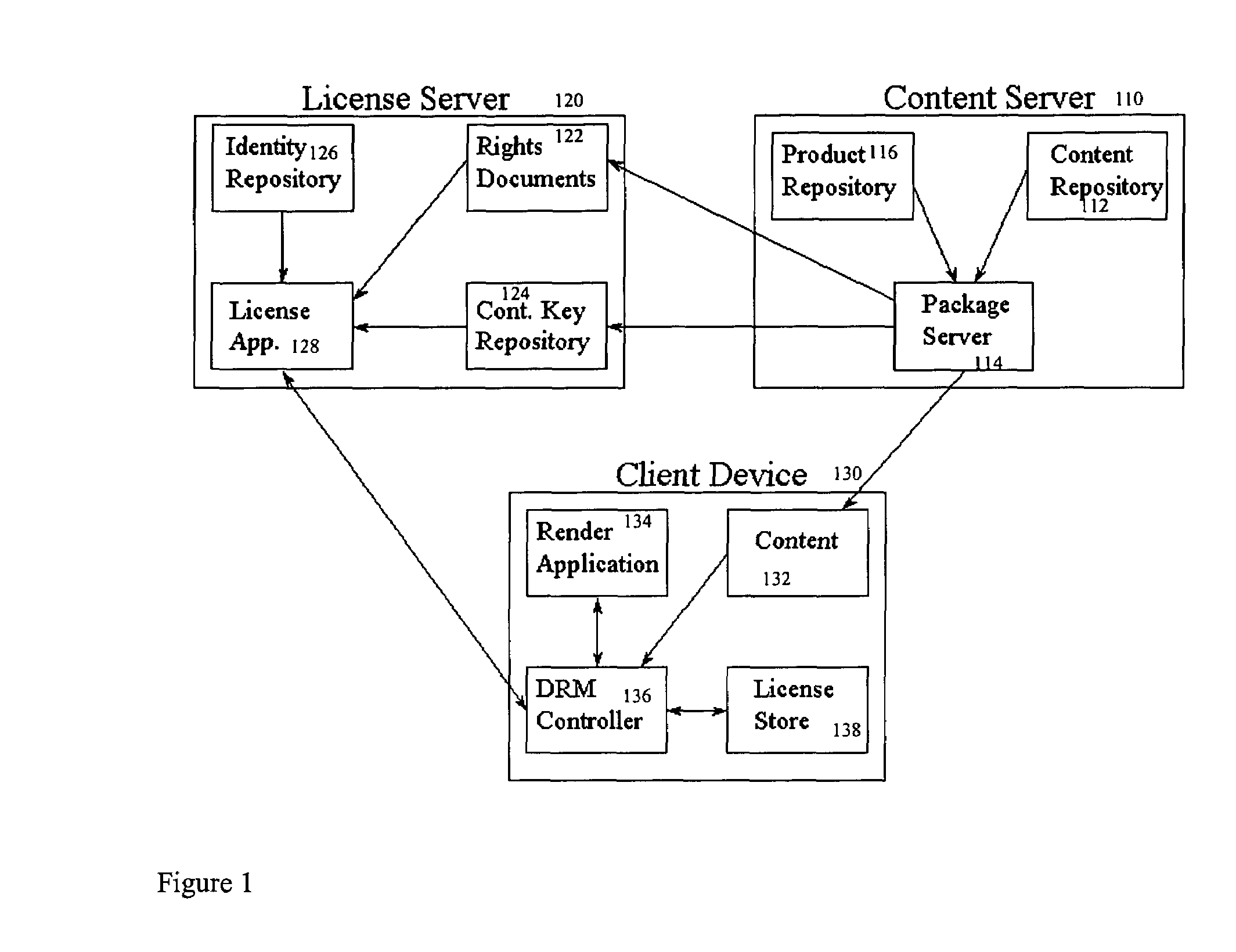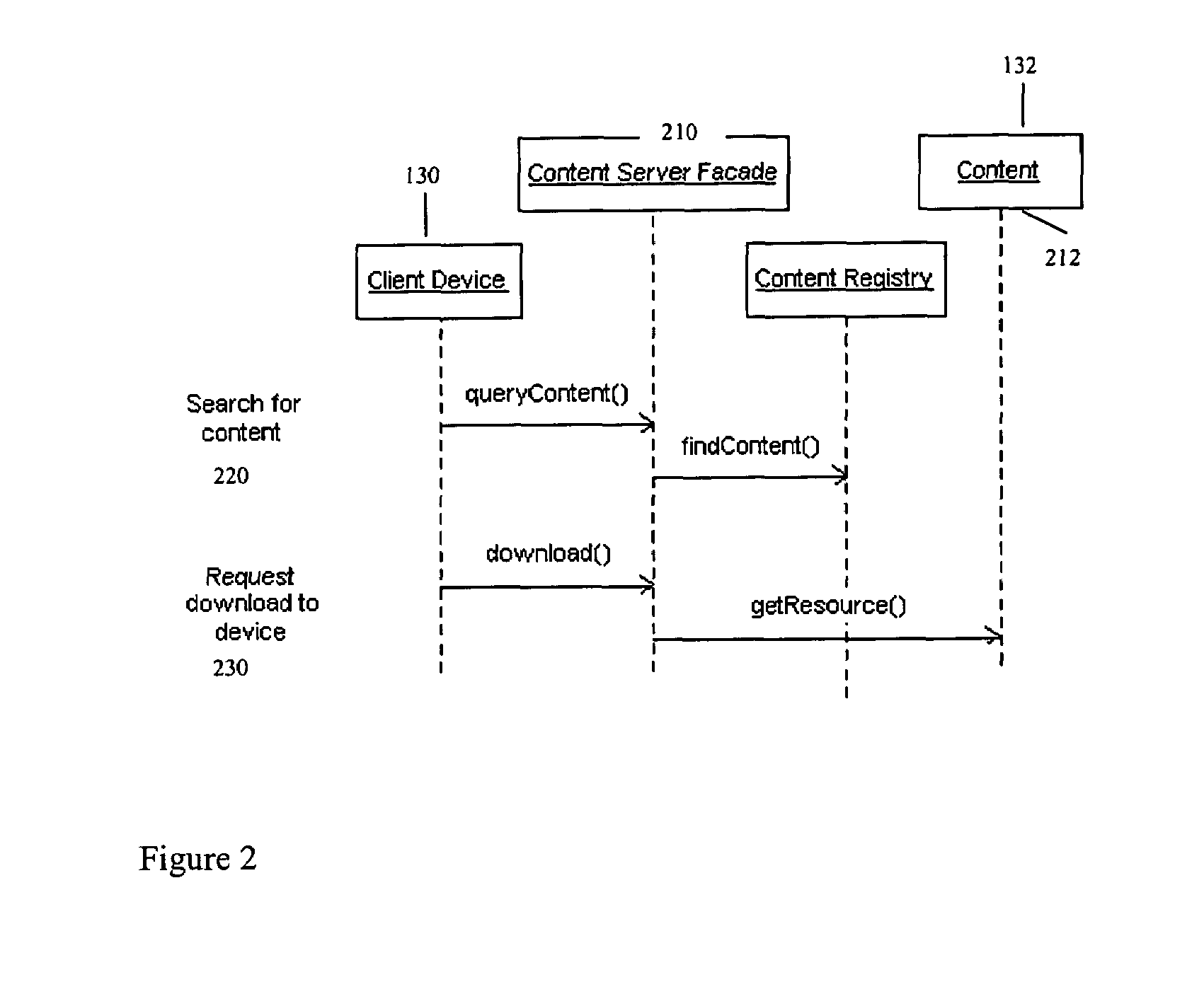System and method for securing digital content
a digital content and digital technology, applied in the field of digital information protection, can solve the problems of not moving over to a secure digital highway, unable to protect consumers, and loss of their right to listen to albums, etc., to simplify the consumer's drm experience and streamline the purchasing process.
- Summary
- Abstract
- Description
- Claims
- Application Information
AI Technical Summary
Benefits of technology
Problems solved by technology
Method used
Image
Examples
Embodiment Construction
[0095]The DRM industry relies on the fundamental concept of Rights. The DRM industry has a set of typical business models that exist between consumers and rightsholders. The invention does not specifically depend on these standards, but a preferred embodiment may be built using these standards or others supplying the same type of functionality.
[0096]Referring to FIG. 1, the reference architecture discussed in this application supports the separate distribution of the rights document necessary for the implementation of the superdistribution business model. The reference architecture / platform comprises three major components: the content server (110), the license server (120) and the client (130). Each of these components collaborates with the others to complete the DRM implementation. It should be noted that in some embodiments, the content server (110) and the license server (120) may comprise one entity. In other embodiments, these components are separated to provide better distrib...
PUM
 Login to View More
Login to View More Abstract
Description
Claims
Application Information
 Login to View More
Login to View More - R&D
- Intellectual Property
- Life Sciences
- Materials
- Tech Scout
- Unparalleled Data Quality
- Higher Quality Content
- 60% Fewer Hallucinations
Browse by: Latest US Patents, China's latest patents, Technical Efficacy Thesaurus, Application Domain, Technology Topic, Popular Technical Reports.
© 2025 PatSnap. All rights reserved.Legal|Privacy policy|Modern Slavery Act Transparency Statement|Sitemap|About US| Contact US: help@patsnap.com



